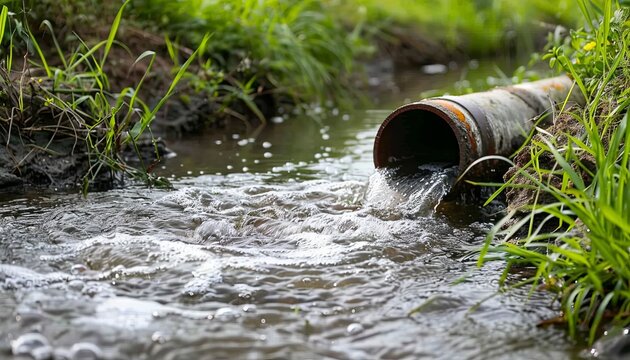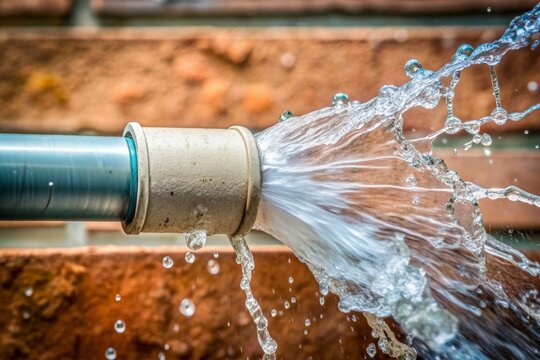Signs of a Burst Pipe: How to Identify and Address the Issue Before It Escalates
Signs of a Burst Pipe: How to Identify and Address the Issue Before It Escalates
Blog Article
Preventing Burst Pipeline: Crucial Tips to Shield Your Plumbing
Preventing ruptured pipelines is a crucial issue for property owners, particularly throughout cooler months when the risk of freezing is heightened. Applying critical actions such as appropriate insulation, regular inspections, and keeping constant indoor temperature levels can dramatically reduce the probability of pipeline failure. Furthermore, recognizing emergency procedures gears up homeowners to respond quickly to potential pipes concerns. Many are unaware of the details vulnerabilities that their pipelines might face. Discovering these vulnerabilities can offer very useful understandings into securing your plumbing system efficiently.
Understand Pipe Vulnerabilities
Comprehending pipeline vulnerabilities is crucial for reliable pipes maintenance and avoiding expensive damages. A number of factors contribute to the vulnerability of pipelines to ruptureds, consisting of material composition, age, and ecological problems. Older pipes, particularly those made from galvanized steel or polybutylene, frequently deteriorate in time, resulting in boosted danger of leaks and tears.
Temperature variations can likewise substantially influence pipeline stability. In chillier climates, water trapped in pipes can ice up, applying and increasing pressure on the pipe wall surfaces, which might ultimately bring about a burst. High water stress can stress pipelines, especially at bends and joints, increasing the likelihood of failing.

Insulate Piping Correctly
Proper insulation of pipelines is essential for protecting against cold and succeeding ruptureds during cold weather condition (burst pipe). Protecting your plumbing system efficiently safeguards versus temperature level drops that can lead to costly damage. Begin by recognizing at risk locations where pipelines are subjected to exterior temperatures, such as cellars, attics, and exterior walls
Usage foam pipe insulation sleeves or cover insulation tape around these areas to give a protective barrier. Make certain that all areas of the pipes, especially those with restricted warmth exposure, obtain adequate insulation. Pay unique interest to installations and joints, as these are much more susceptible to freezing.
When shielding, it's important to choose products that satisfy local building regulations and are ideal for the details atmosphere. As an example, fiberglass insulation is frequently suggested for its thermal resistance properties - burst pipe. In addition, take into consideration making use of warmth cables or tape in severe conditions, which can be plugged in to offer additional warmth
Consistently inspect insulated pipes for any indications of wear or damage, as compromised insulation can decrease its efficiency. By taking these proactive steps, you considerably minimize the risk of pipeline bursts, making sure a reputable pipes system throughout the cold weather.
Maintain Regular Temperature Level
A steady indoor temperature is essential for protecting against ruptured pipelines during the cold months. When temperatures drop, water within pipes can freeze, developing and increasing pressure that may inevitably create the pipelines to ruptured. To alleviate this risk, home owners must maintain a constant temperature throughout their space, preferably no less than 55 ° F(13 ° C)Making use of a programmable thermostat can aid take care of indoor temperature levels properly, making sure that areas with plumbing stay cozy also when your home is empty. Pay special interest to locations that are much more vulnerable to chilly, such as garages, attic rooms, and basements. Maintaining cabinet doors open under sinks can additionally enable warmer air from the home to circulate around plumbing.
This minor circulation of water can prevent freezing by alleviating pressure within the pipelines. By implementing these methods, house owners can significantly reduce the threat of pipe bursts and secure their plumbing systems against the extreme winter months elements.
Routinely Examine Plumbing
Normal examinations of plumbing systems are essential for protecting against burst pipelines and preserving total home honesty. Routine checks enable home owners to recognize possible concerns prior to they rise into expensive fixings or significant water damage. During these examinations, it is necessary to examine visible pipes for indications of corrosion, leaks, or put on. Pay special attention to locations susceptible to cold, such as cellars, attic rooms, and exterior wall surfaces.
Furthermore, inspecting connections and joints is important, as these points are typically at risk to leakages. House owners need to likewise assess water pressure levels, as extreme pressure can strain the plumbing system and enhance the danger of pipe ruptureds.
Think about scheduling specialist plumbing inspections a minimum of when a year, particularly prior to winter season, to ensure your system is gotten ready for colder temperature levels. Regular examinations not only aid in identifying immediate issues yet additionally foster lasting upkeep techniques that can boost the life expectancy of your pipes system. By being proactive in your method, you can protect your home against the disruptive and expensive repercussions of ruptured pipes. Prioritizing pipes examinations is a financial investment in your house's health and wellness.
Know Emergency Situation Procedures
Comprehending emergency situation procedures is crucial for each property owner, specifically after performing regular plumbing inspections. Being planned for a plumbing emergency can substantially minimize damage and save costs. Locate your primary water shut-off valve; it is generally discovered near the water meter or where the main line enters your home. Acquaint yourself with its operation, continue reading this as closing off the supply of water quickly can stop substantial flooding.
Next, keep essential devices useful. A plumbing emergency situation set need to include a wrench, bettor, and towels, in addition to a flashlight and a bucket for little leakages. Additionally, take into consideration having the get in touch with information for a relied on plumbing professional conveniently available, needs to the situation escalate beyond your control.
If you identify a published here leakage or ruptured pipeline, promptly shut off the supply of water and notify your plumbing. Record the damages with pictures for insurance policy functions. Recognize the signs of potential pipes problems, such as unusual water stress fluctuations or damp spots on wall surfaces
Inevitably, positive understanding and quick activity are essential in managing pipes emergencies, guaranteeing your home continues to be secured and minimizing prospective damages.

Conclusion
Finally, avoiding ruptured pipes demands a diverse method that includes understanding pipeline susceptabilities, appropriate insulation, maintaining regular indoor temperature levels, regular inspections, and expertise of emergency situation treatments. By executing these essential methods, the risk of pipes failings can be significantly decreased, therefore guaranteeing the long life and efficiency of the plumbing system. Positive steps not just safeguard against possible damages however additionally contribute to total water preservation and the defense of property.
In chillier environments, water trapped in pipelines can ice up, increasing and exerting pressure on the pipeline wall surfaces, which might ultimately lead to a burst. When temperature levels decline, water within pipelines can ice up, creating and broadening stress that might ultimately trigger the pipes to ruptured. By applying these strategies, property owners can considerably minimize the danger of pipeline bursts and safeguard their pipes systems i loved this versus the harsh winter months components.

Report this page